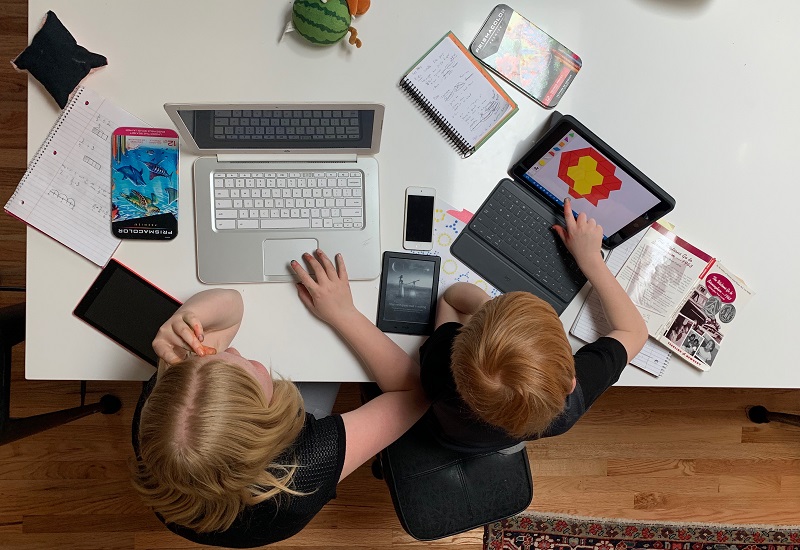
25 Mar Impact and opportunities of educational technology during the pandemic
Some may say that 2020 is the year of educational technology. The compulsory closures of colleges and universities pushed most institutions to pay for education through remote learning.
To achieve this, they all turned to educational innovations such as video conferencing tools and online learning management software. Likewise, other digital solutions to keep education afloat.
Even before COVID-19, there was already high growth in technological innovation and adoption of educational technology. With global investments that reached $ 1 8.66 billion in 2019 and a general market projection that will reach $ 350 billion by 2025. Let’s see a little more about this technological development.
Educational technology and its renewal in times of change
The pandemic has also accelerated digital transformation in schools. What is quickly shaping what education will look like and how it will be delivered in the years to come. 82% of the institutions assured that combining the use of technology with traditional teaching methods will be a constant for the next ten years. This is the current educational technology. With the advancing pace of educational technology in the world of information and communication technologies, essential enablers have been detected. These are currently helping institutions to find broader opportunities and solutions in education. These enablers are:
Mobile devices
Defined as portable or connectivity tools . They are considered essential for the creation and consumption of content around knowledge.
Blended learning
We are talking about the combination of learning through a combination of face-to-face and online interaction. Enabled by a collection of digital tools and technologies.
Cloud infrastructure
The definitive key in virtual infrastructure that allows access to information technology (IT) services through a network. This, at the same time, that your infrastructure is physically removed.
Educational technology tools that stood out during the pandemic
The most compelling technology-related lessons to be learned from the pandemic involve informal digital practices. Some might be thought of as improvised or rudimentary.
It is the use of social platforms such as Tik Tok or messaging services such as WhatsApp, which have helped teachers. Likewise, to students, parents, and university students, to continue with school at home. Indeed, there are several tools that will follow your way to the top:
Using social media to engage students
Social media tools are still blocked in many places. However, students, and especially teachers, took advantage of them. For example, TikTok saw the parade of teachers of all ages turning to the platform to share short teaching snippets. Up to a minute long. Principals have even used it to keep in touch with their schools, making 60-second motivational speeches.
Distance Lessons
There were many frustrations on both sides, but the forced turn to distance learning also had a positive side effect. Parents and school staff felt more connected. The connection capacity of different platforms was also tested, among which Google took the lead.
That’s how schools and parents entered Google Meet for free. There, they were able to add up to 250 students with live broadcast. Even those who missed class could see the recorded videos of all the content. Also, appointments were scheduled in the calendar to teach classes dedicated to those who needed additional help.
Using AR and VR
In terms of augmented reality, educational technology applications are coming to the classroom little by little. At the moment, we are not talking about a general rule for the entire sector due to its high costs. However, recent implementations are allowing students to “interact” more thoroughly and in an accessible way with their assignments.
Resources such as the audio story with augmented reality, available to Movistar users, provide students with an application where they can see all the planets of the Solar System in 3 dimensions. Similarly, apps like Lessons in Herstory allow students to scan textbooks where they can learn in augmented reality about prominent women in modern history. Similarly, medical schools are using AR models to train and support surgeons and nurses in medical procedures as diverse as neurosurgery or needle placement.
The deployment and growth of educational technology do not plan to slow down. However, to better cope with it, educational institutions, as well as staff, must be updated with the latest advances. Teachers must be prepared to ensure that online learning can continue.
